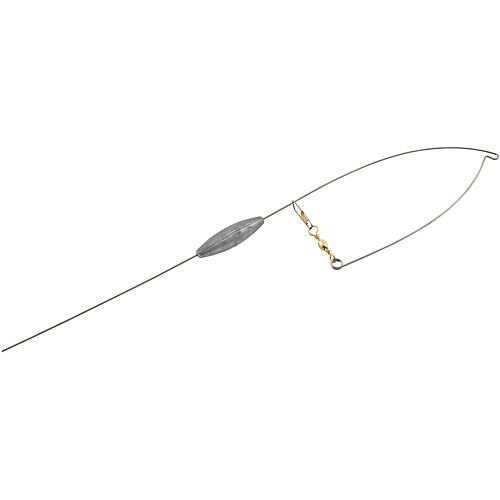

More information on other notable nymph patterns can be found in my guide book SIMPLE NYMPHING FOR TROUT IN RIVERS & STREAMS. It’s not the best nymphing rig for every water type, but if you use it in a fast river run, I promise you won’t be disappointed!
#Bottom bouncer rig how to#
The figure above shows you exactly how to tie a bounce nymphing rig.
#Bottom bouncer rig free#
Likely to get snagged, and it’s a lot easier to wiggle weights free from debris and rocks than hooks. Because the weights are moving along the bottom vertically, instead of horizontally, they are less likely to snag in rocks and are more likely to wiggle free when pulled. 24 Bottom Bouncers-8 Each 1 1/2 Oz, 2 Oz, and 3 Oz Made with.

Last, the rig rarely snags the bottom and is also very easy to wiggle free when it does snag. With a standard nymph rig, you never really know the exact depth of water your nymphs are in. Third, I know the exact depth of the water column my nymphs are drifting in. A standard nymph rig will ineffectively fish downstream of your standing position because the current will apply force to the leader and raise your nymphs up off the bottom. Fishing a crankbait with a bottom bouncer would be like fishing a DT16 in 15 feet of water. Since water can be considered in this case to be an incompressible fluid, the buoyancy force on the lure is the same regardless if its 1 foot deep or 30 feet deep. The rig also effectively fishes downstream of your standing Here are the 7 most important rigs for walleye fishing: Bottom bouncer rig Lindy rig Drop shot rig Crawler harness Slip bobber rig Ned rig 3 way rig If. Yes, the dive of the crankbait is independent of the bottom bouncer. Since the split shot weights are located at the very bottom of the rig, the nymphs instantly get down into the bottom strike zone. Second, the rig sinks to the bottom quicker and effectively fishes for almost the entire length of a drift. The speed should be set so that the weight of the bottom bouncer will set the rig in the desired zone and depth while the line from the bouncer to the rod tip runs at a 45-degree angle. A bottom bouncer consists of a rigid, high tensile three-way wire running through a weight ranging on average from 1/2 ounce to 3 ounces. So you can think of it as a castable bottom bouncer setup to use in areas with heavy cover. The nymphs are also the first part of your rig that a trout sees, increasing the likelihood that a trout will take your nymphs before spotting your leader or weights. In many ways, the Tokyo rig resembles a mini bottom bouncer rig, but the main difference between them is that the bottom bouncer is usually trolled, while the Tokyo rig is used for casting and retrieving.

I prefer to use a Provo River bounce or “drop-shot” nymphing rig over a standard nymphing rig for several reasons described below:įirst, the nymphs drift more realistically because they are suspended from the leader at about a ninety degree angle.


 0 kommentar(er)
0 kommentar(er)
